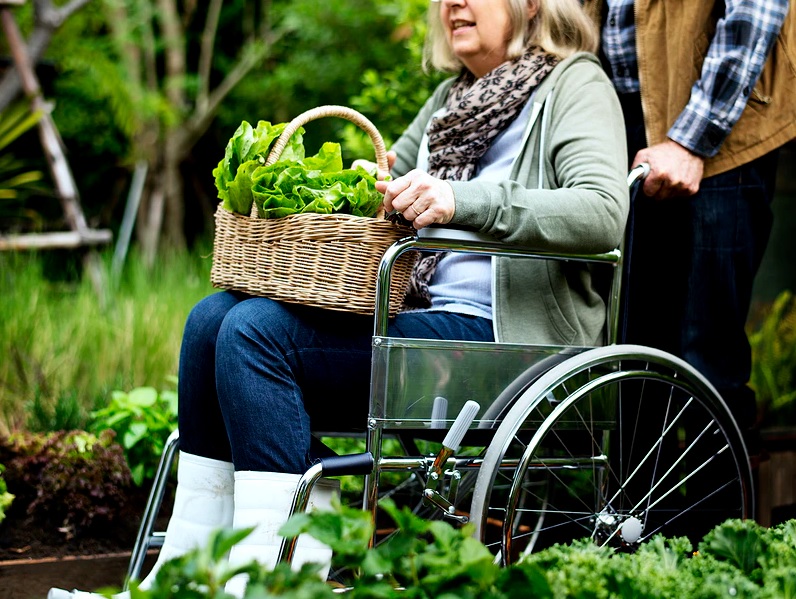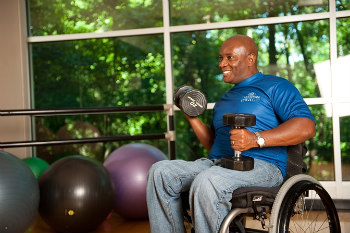September is National Childhood Obesity Month; and some people with disabilities, including children, are at a greater risk of obesity.
Facts and statistics can sometimes seem alarming. The following information is presented with the intention to educate and empower.
Overweight and obesity are both labels for ranges of weight that are greater than what is generally considered healthy for a given height. The terms also identify ranges of weight that have been shown to increase the likelihood of certain diseases and other health problems. Behavior, environment, and genetic factors can affect whether a person is overweight or obese.
Adults
For adults, overweight and obesity ranges are determined by using weight and height to calculate a number called the “body mass index” (BMI). BMI is used because, for most people, it correlates with their amount of body fat.
- An adult who has a BMI between 25 and 29.9 is considered overweight.
- An adult who has a BMI of 30 or higher is considered obese.
Children
Among children of the same age and sex, overweight is defined on CDC growth charts as a BMI at or above the 85th percentile and lower than the 95th percentile. Obesity is defined as having a BMI at or above the 95th percentile.

Is BMI the Best Assessment for All
Researchers have shown that BMI may not be the best measurement for some people with disabilities.
For example, BMI can underestimate the amount of fat in people with spinal cord injuries who have less lean muscle mass.
Some researchers prefer measuring a person’s waist or neck where extra fat might be on the body, and using other methods to determine if a person is overweight or obese.
The Obesity Epidemic
Obesity affects different people in different ways and may increase the risk for other health conditions among people with and without disabilities.
People with Disabilities
- Children and adults with mobility limitations and intellectual or learning disabilities are at greatest risk for obesity.
- 20% of children 10 through 17 years of age who have special health care needs are obese compared with 15% of children of the same ages without special health care needs.
- Annual health care costs of obesity that are related to disability are estimated at approximately $44 billion.

In the United States
- More than one-third of adults – more than 72 million people – are obese.
- Obesity rates are significantly higher among some racial and ethnic groups. Non-Hispanic Blacks or African Americans have a 51% higher obesity prevalence and Hispanics have a 21% higher obesity prevalence than Non-Hispanic Whites.
- A CDC Vital Signs report, titled “State-Specific Obesity Prevalence Among Adults – United States, 2009,” points out that people who are obese incurred $1,429 per person extra in medical costs compared to people of normal weight.
- Annual health care costs of obesity for all adults in the United States were estimated to be as high as $147 billion dollars for 2008.
Challenges Facing People with Disabilities
People with disabilities can find it more difficult to eat healthy, control their weight, and be physically active. This might be due to:
- A lack of healthy food choices.
- Difficulty with chewing or swallowing food, or its taste or texture.
- Medications that can contribute to weight gain, weight loss, and changes in appetite.
- Physical limitations that can reduce a person’s ability to exercise.
- Pain.
- A lack of energy.
- A lack of accessible environments (for example, sidewalks, parks, and exercise equipment) that can enable exercise.
- A lack of resources (for example, money, transportation, and social support from family, friends, neighbors, and community members).
Step It Up!
Step It Up! aims to increase walking across the U.S. by calling for access to safe and convenient places to walk and wheelchair roll for people of all ages and abilities.

What can be done?
Obesity is a complex problem that requires a strong call for action, at many levels, for both adults as well as children. More efforts are needed, and new federal initiatives are helping to change our communities into places that strongly support healthy eating and active living.
All people can:
- Eat more fruits and vegetables and fewer foods high in fat and sugar.
- Drink more water instead of sugary drinks.
- Watch less television.
- Support breastfeeding.
- Promote policies and programs at school, at work, and in the community that make the healthy choice the easy choice.
- Be more physically active.
Physical Activity for People with Disabilities
Evidence shows that regular physical activity provides important health benefits for people with disabilities. Benefits include improved cardiovascular and muscle fitness, mental health, balance, and a better ability to do tasks of daily life.
Health Consequences of Overweight and Obesity
Overweight and obesity increases the risk of a number of other conditions, including:
- Coronary heart disease
- Type 2 diabetes
- Cancers (endometrial, breast, and colon)
- High blood pressure
- Lipid disorders (for example, high total cholesterol or high levels of triglycerides)
- Stroke
- Liver and Gallbladder disease
- Sleep apnea and respiratory problems
- Osteoarthritis (a degeneration of cartilage and its underlying bone within a joint)
- Gynecological problems (abnormal periods, infertility)
For similar content by AmeriDisability, check out these articles:
- 7 Health & Wellness Self Management Programs for People with Disabilities
- Exercise and Disability: Resources for Accessible Gym Equipment
Source: CDC






